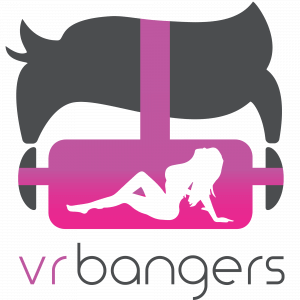Whenever it comes to virtual reality, the user experience is a crucial aspect that can make or break the entire technology. With the recent release of Povr, a popular VR headset, many are curious about its user experience and whether it lives up to its hype. I will provide an honest review of Povr’s user experience and give you all the information you need before making a purchase.

- ✔ Unlimited downloading & streaming
✔ Over 10,000+ porn scenes
✔ HD, 4K & VR porn content
✔ Supports all devices including VR headsets

- ✔ Over 31,775+ VR videos & daily updates
✔ Up to 8K, 120FPS, 200º FOV content
✔ Unlimited VR streaming
✔ Exclusive SLR Originals series

- ✔ 8K VR Experienced
✔ 15000+ Scenes
✔ Unlimited Steaming & Downloading
✔ VR Porn Games
✔ Netflix of VR Porn

- ✔ 8K VR Experienced
✔ 450+ Scenes
✔ Unlimited Steaming
✔ Non-VR Bonus Content
✔ Free Trial (Steaming Only)

- ✔ Worlds largest VR porn collection with over 20,000+ scenes
✔ Free trial with downloadable contentd
✔ 7K Steaming
✔ Compatible with all devicesdd
The Evolution of User Experience
User experience, commonly referred to as UX, has become a crucial aspect of modern day business and technology. As consumers become more tech-savvy and demand seamless interactions with products and services, companies have been forced to prioritize user experience in order to stay competitive. But what exactly is user experience and why has it become such a buzzword in recent years?
In simple terms, user experience refers to the overall interaction a person has with a product or service. This can include everything from how easy it is to navigate a website, to the design and functionality of an app, to the customer service experience at a physical store. It encompasses all aspects of a user’s interaction with a brand and ultimately shapes their perception of that brand.
The concept of user experience first emerged in the 1990s when Don Norman, a cognitive scientist, coined the term while working at Apple. However, it wasn’t until the mid-2000s that UX began gaining widespread attention as smartphones and other digital devices became more prevalent in our daily lives.
Today, user experience has evolved into its own field, with dedicated professionals focusing on designing and improving the usability of products and services. With technology constantly advancing and consumer expectations continually rising, let’s take a deep dive into one specific aspect of user experience – virtual reality – and examine how it impacts our everyday lives.
What is Virtual Reality?
Virtual reality (VR) is an immersive technology that allows users to interact with computer-generated environments by using special headsets or other equipment. This technology has been around for decades but only recently has it become more accessible to the general public. There vrfuckdolls guides are a wide variety of customizable characters and scenarios to choose from in the VR Fuck Dolls app. Now is the perfect time to indulge in the best VR porn site deals and elevate your adult viewing experience.
One of the key factors driving the popularity of virtual reality is its ability to provide users with an unparalleled level of immersion. Unlike traditional forms of media such as TV or movies, VR allows users to feel fully present in a virtual world. This has opened up new opportunities for businesses and organizations to create unique and engaging experiences for their users.
The Rise of VR in User Experience
The use of virtual reality in user experience has been steadily growing over the past few years, with a particular boom in 2020 due to the COVID-19 pandemic. As people were forced to stay at home, they turned to virtual reality as a way to escape and engage with others in a virtual space.
One industry that has fully embraced VR is gaming. With VR headsets becoming more affordable and game developers creating immersive experiences, gamers now have the ability to fully immerse themselves in their favorite games. This not only enhances the overall gaming experience but also creates new opportunities for game developers to innovate and push boundaries.
But it’s not just gaming where VR is making its mark. Companies are also utilizing this technology to enhance customer experiences. Real estate companies are using VR to give potential buyers virtual tours of properties, allowing them to visualize themselves living in a space without ever having to physically visit it. This not only saves time and resources but also provides a more engaging and realistic experience for potential buyers.
Another industry that is heavily impacted by VR is education. Virtual reality allows students to go beyond traditional classroom learning and take part in interactive and immersive experiences that can transport them anywhere in the world. This type of learning has proven to be more effective as it engages students on a deeper level and makes learning more fun and memorable.
The Impact of VR on User Experience
So how does virtual reality impact user experience? Well, there are several ways in which it improves overall UX.
As mentioned earlier, VR provides an unparalleled level of immersion. This makes the user experience much more engaging and memorable. By being fully present in a virtual world, users are more likely to pay attention and interact with what is being presented to them.
VR allows for more personalized experiences. With the use of data and analytics, companies can create customized virtual environments for users based on their preferences and behaviors. This creates a more tailored and unique experience for each individual, making them feel more valued and connected to the brand.
VR has the ability to evoke strong emotions within users. By creating realistic and immersive experiences, companies can tap into users’ emotions and create stronger connections with their brand. This emotional connection is what ultimately leads to increased loyalty and retention among customers.
The Pros of Virtual Reality in User Experience
- Increased engagement: Due to its immersive nature, VR has been shown to increase user engagement. Users are more likely to pay attention and interact with what is being presented to them.
- Personalization: With the use of data and analytics, companies can create customized virtual environments for users based on their preferences and behaviors. This creates a more tailored and unique experience for each individual.
- Innovative marketing opportunities: Virtual reality opens up new possibilities for companies to market their products or services in unique ways. Whether it’s through immersive advertisements or branded VR experiences, businesses can stand out from their competitors by utilizing this technology in their marketing strategies. The top VR Hentai experiences can transport you to a whole new dimension of immersive adult entertainment.
- Emotional connection: By tapping into users’ emotions, VR has the ability to create strong emotional connections with a brand, leading to increased loyalty and retention among customers.
- Cost-effective solutions: Virtual reality can save time and resources by providing users with virtual experiences instead of physical ones. Instead of sending sales representatives across the country for product demos, companies can use VR to showcase their products remotely.
- Immersive experiences: As mentioned earlier, virtual reality provides an unparalleled level of immersion, making the user experience much more engaging and memorable.
The Cons of Virtual Reality in User Experience
- Requires training: Depending on the complexity of a VR experience, users may need some training to fully understand how to navigate and interact with the virtual environment. This can be a barrier for some users, especially those who are less tech-savvy.
- Potential health concerns: Extended use of virtual reality headsets has been linked to eye strain, dizziness, and other health concerns. As more research is conducted on these potential side effects, it’s important for companies to consider the well-being of their users when implementing VR in their user experience.
- Technical limitations: Virtual reality technology is still in its early stages and there are technical limitations that can impact the overall user experience. This includes issues such as graphics quality, motion sickness, and hardware compatibility.
- High cost: One of the biggest barriers for companies to adopt VR in their user experience is the high cost associated with it. From purchasing equipment to developing custom VR experiences, it can be a significant investment for businesses.
- Limited accessibility: Not everyone has access to VR equipment or the physical ability to use it. This can limit the potential reach of virtual reality experiences and exclude certain segments of the population from participating.
The Future of Virtual Reality in User Experience
As technology continues to advance and become more accessible, we can expect virtual reality to play an even bigger role in shaping user experiences. With companies constantly looking for ways to stand out and create unique customer interactions, VR presents new opportunities for innovation and creativity.
We are already seeing major developments in virtual reality technology, such as wireless headsets and hand-tracking capabilities, which will make VR experiences even more seamless and user-friendly. As these advancements continue, we can expect virtual reality to become an integral part of our daily lives – from entertainment and education to shopping and communication.
Final Thoughts
Virtual reality has transformed the way we experience products and services by providing us with immersive and engaging experiences. Its impact on user experience is undeniable and will only continue to grow as technology evolves.
While there are certainly challenges that come with implementing VR in user experience, the benefits outweigh them. By leveraging virtual reality, companies can create memorable, personalized, and emotional connections with their users, ultimately leading to increased satisfaction and loyalty among customers.
As we move forward into the future, it’s clear that virtual reality will play a critical role in shaping the way we interact with brands and businesses. So strap on your VR headset and get ready for an immersive experience like no other. The possibilities are endless.
What is the Process for Creating a Povr Review?
The process for creating a povr review typically involves using the product and documenting its features, functionality, and overall performance. This includes taking photos or videos of the product in use, detailing any pros and cons, and providing personal opinions or recommendations. The reviewer may also research the product and compare it to similar ones on the market. The review is written and published on a platform such as a blog or online retailer’s website.
How Does the Povr Review Stand Out From Other Reviews?
The povr review sets itself apart by offering a unique blend of insightful analysis and engaging storytelling. Unlike other reviews, it goes beyond surface-level observations to delve deep into the heart of the subject, providing readers with a more nuanced understanding. With its captivating writing style and thorough evaluation, the povr review is a refreshing and standout choice for those seeking an in-depth look at various topics.